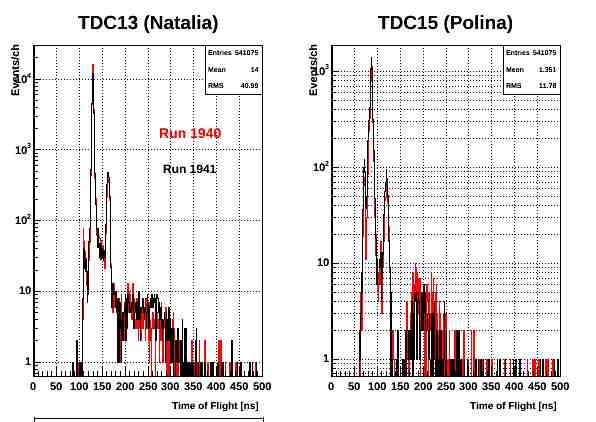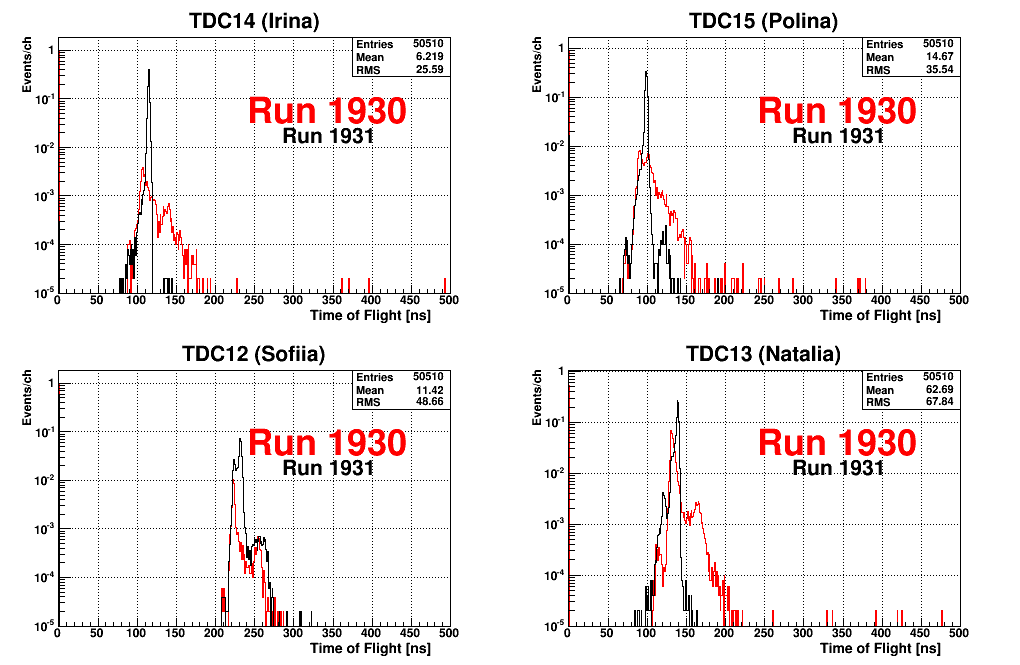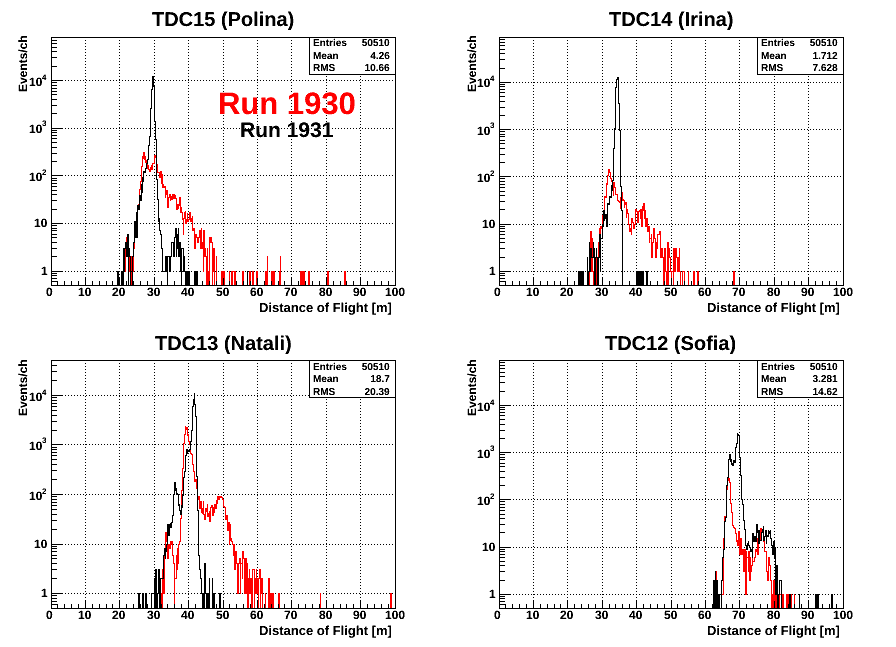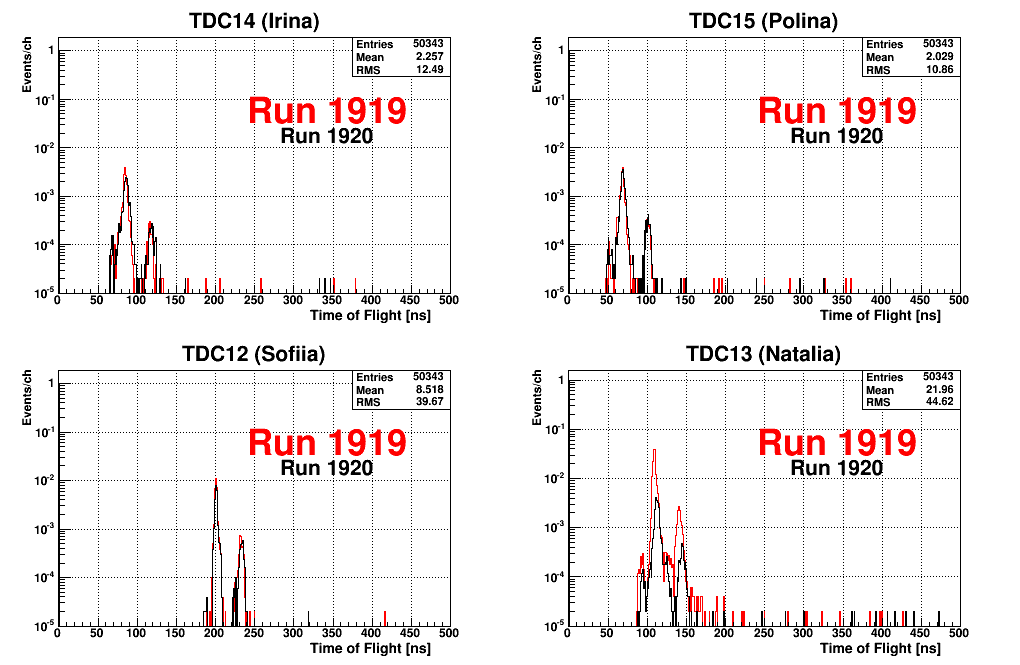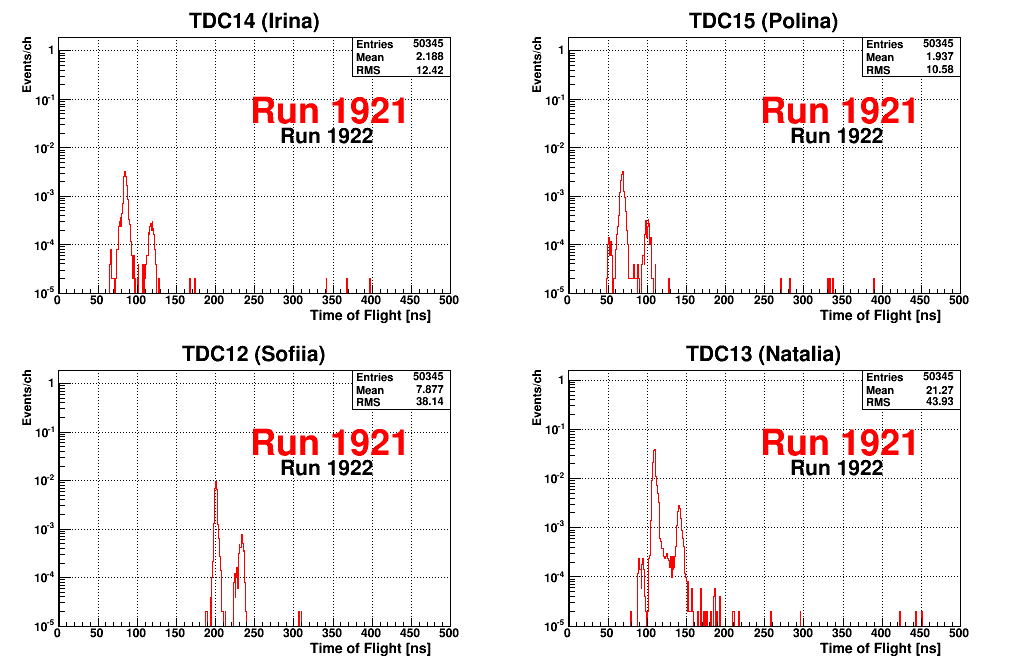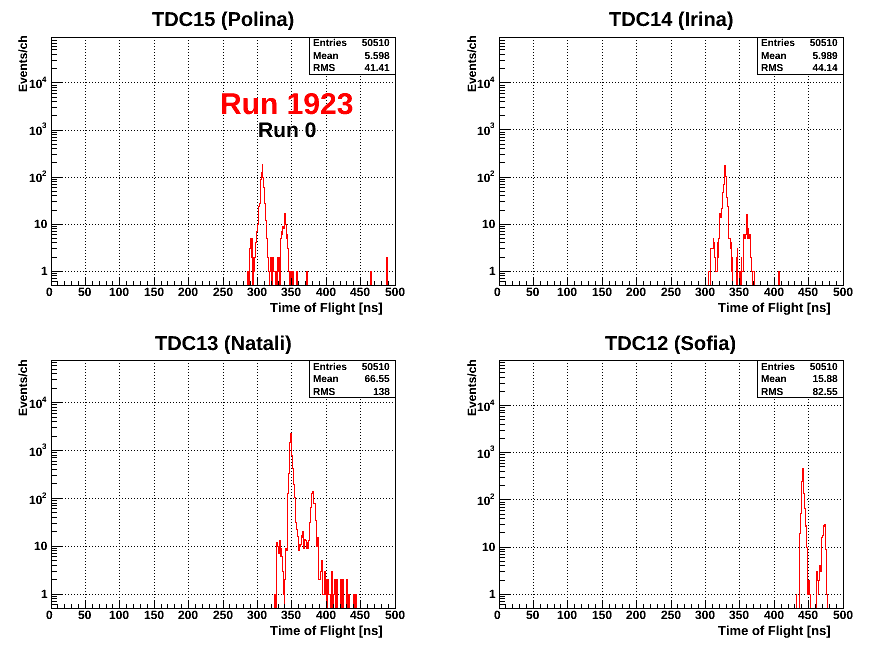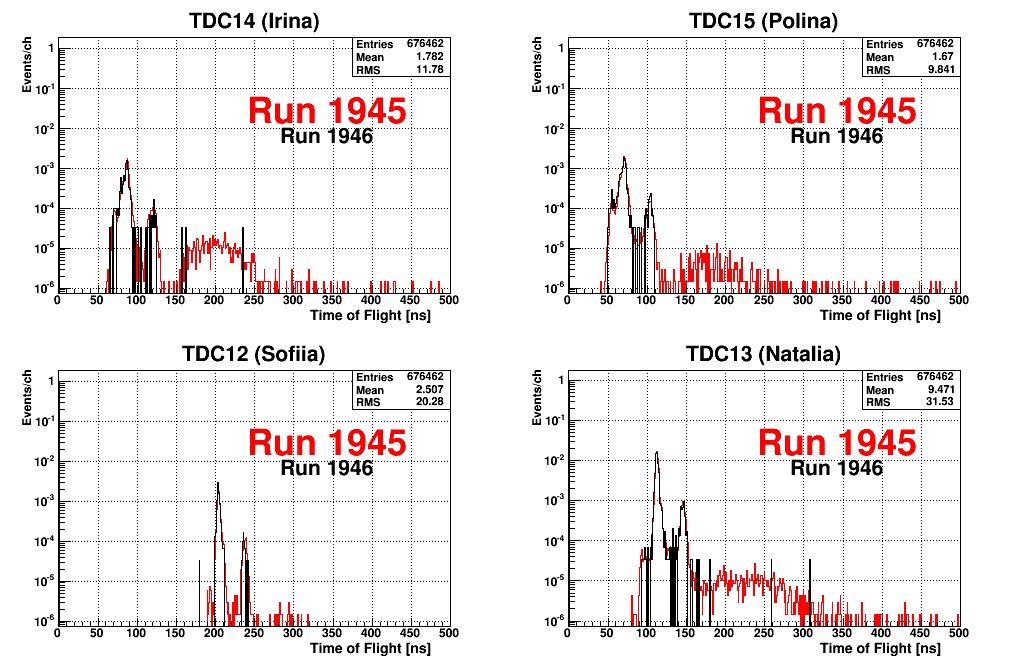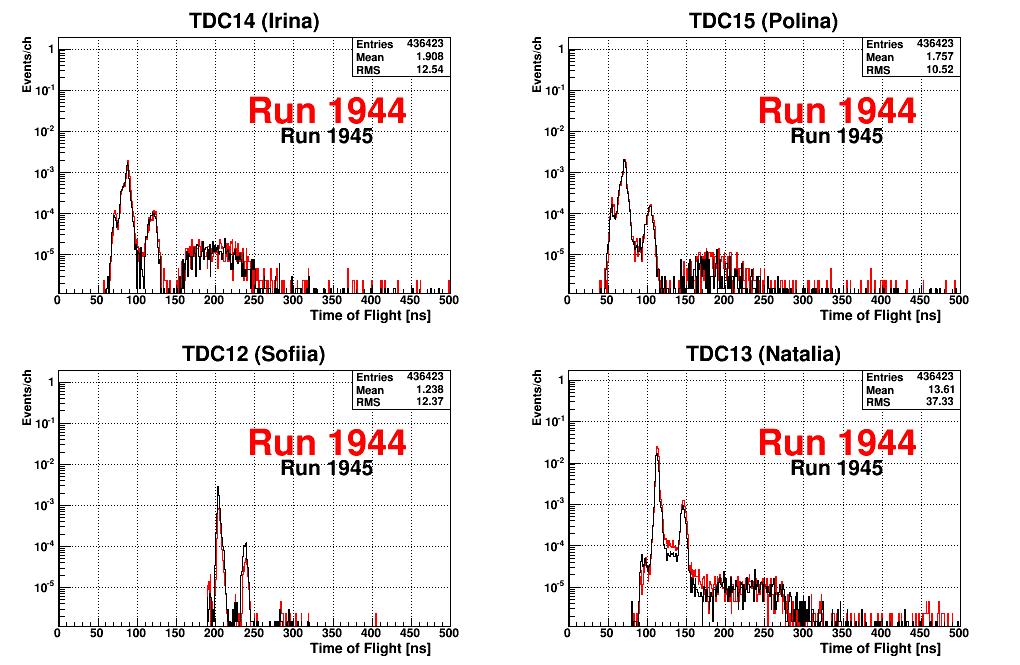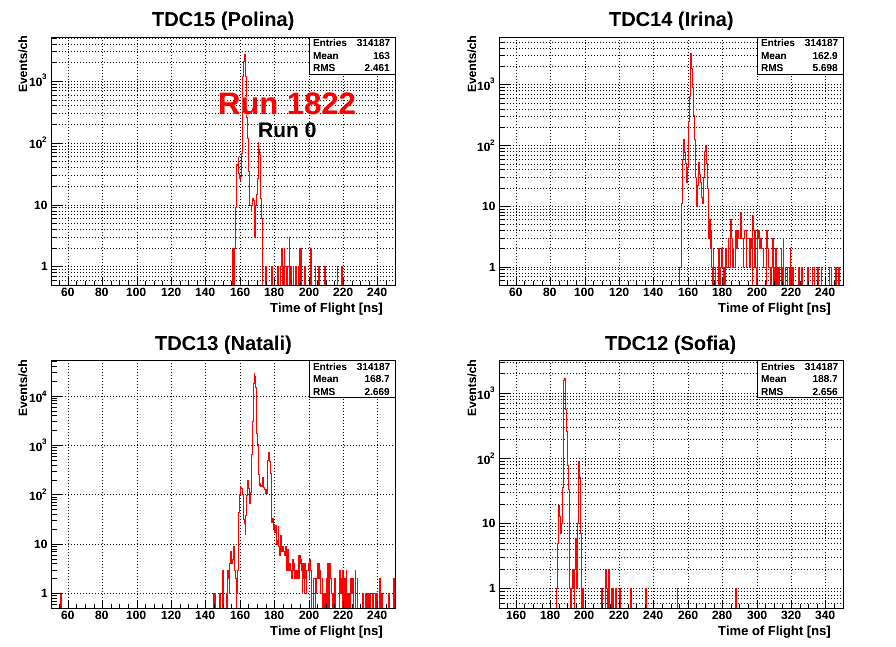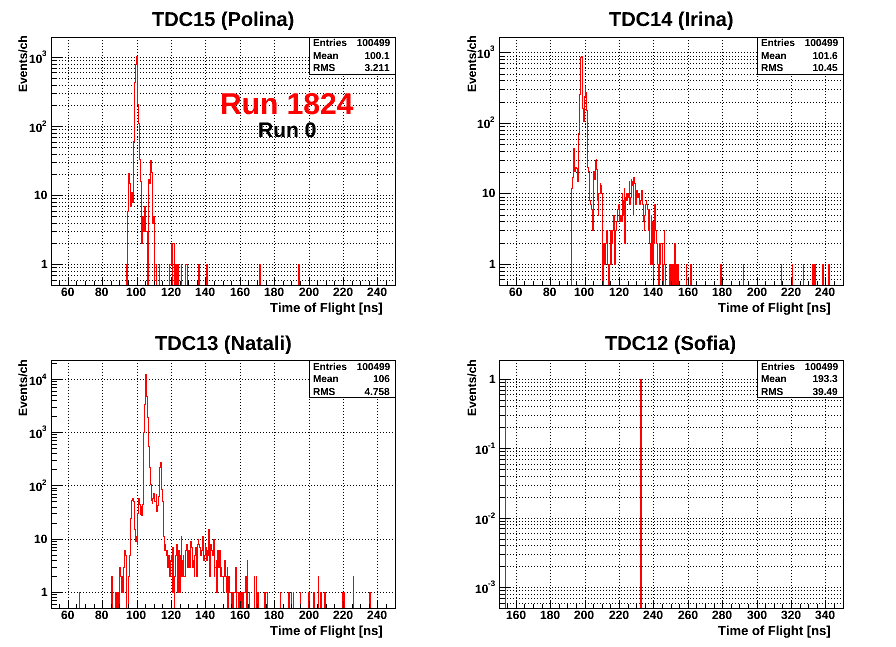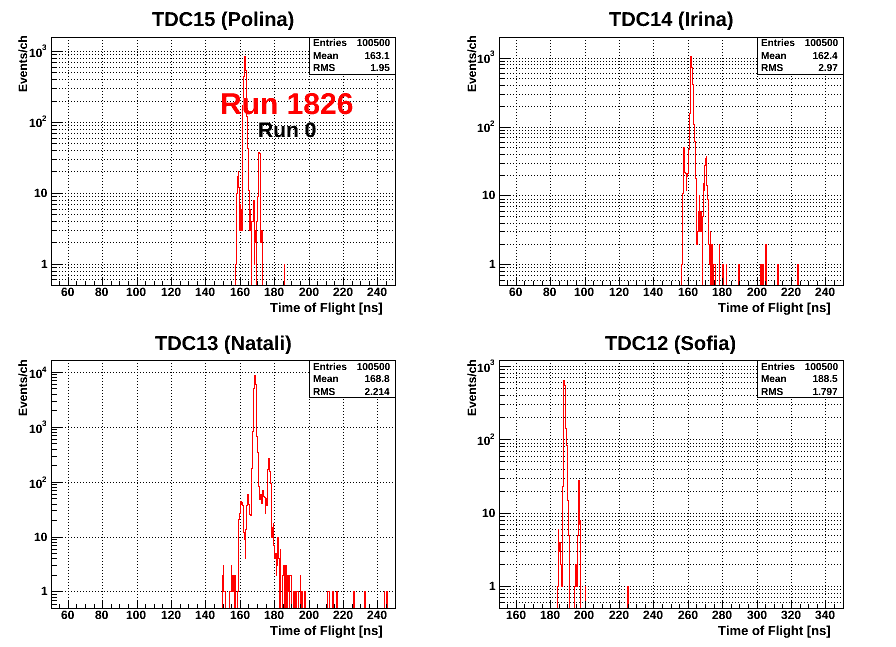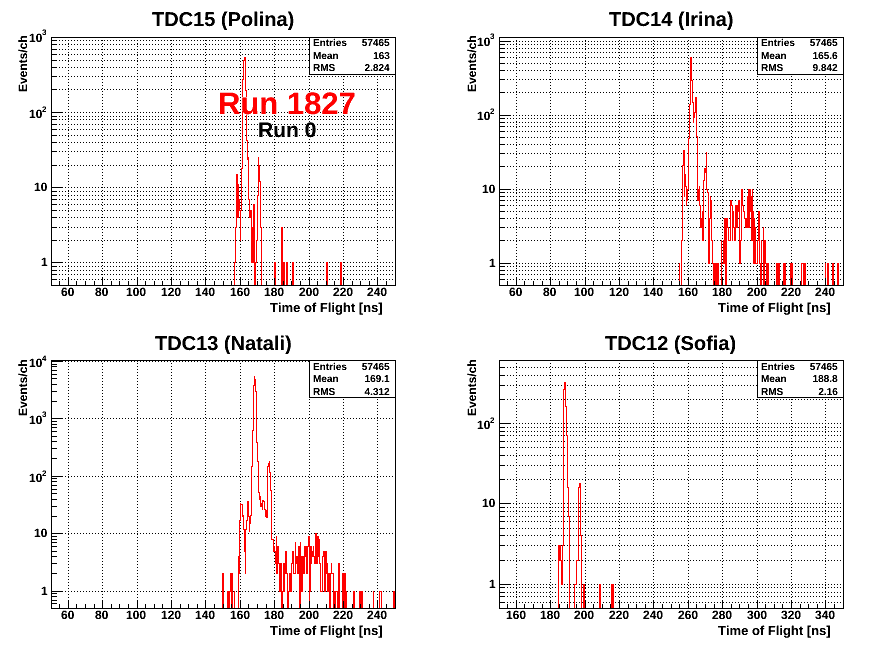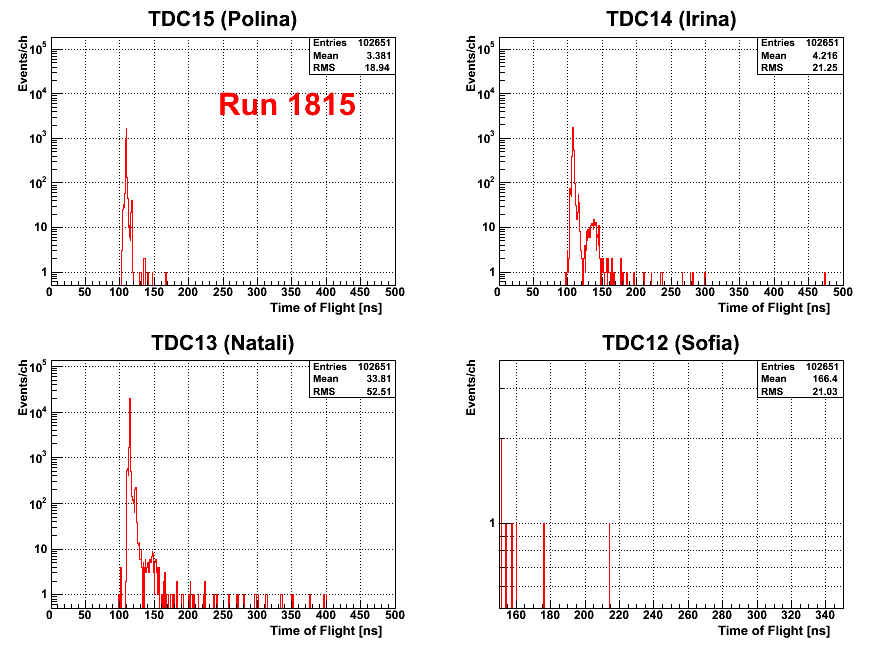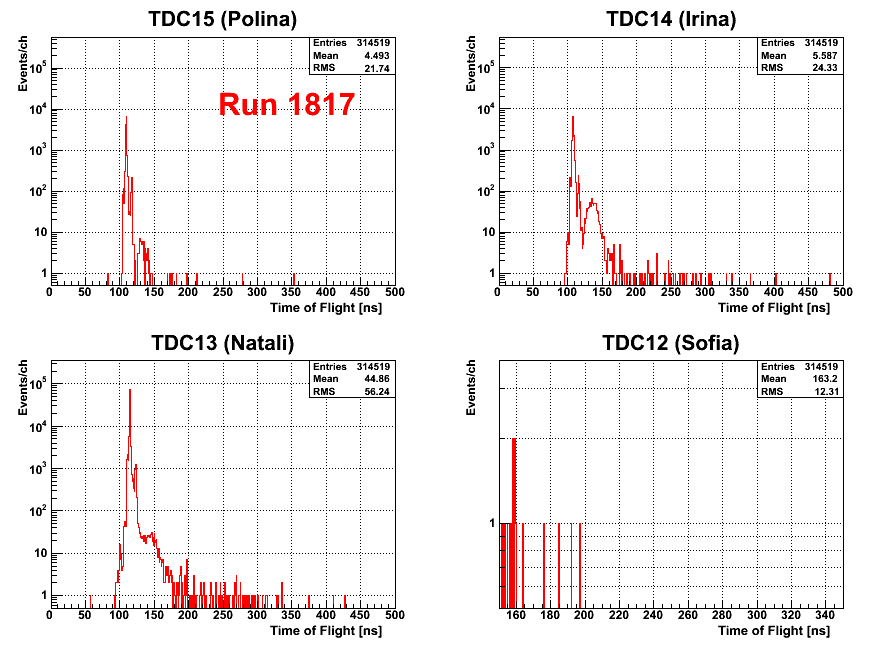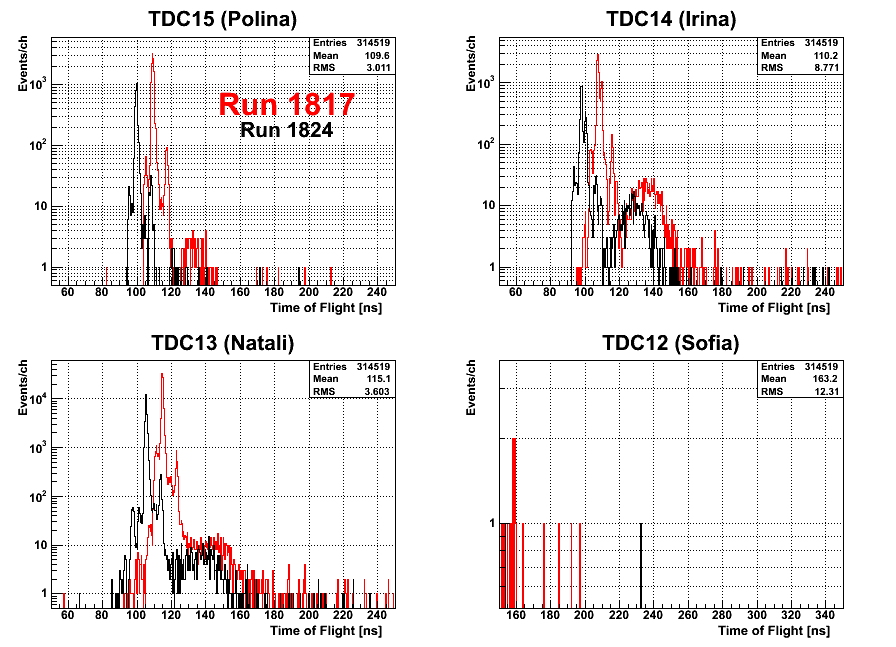Double Peak Analysis
25 MeV Gamma Peak Analysis
The point is to determine why we have all these peaks around the spot the gamma flash is supposed to be. First, I will do an analysis to see exactly where the gamma flash is. Then, we should be able to do some tracking down of what the other peaks are from by converting the TDC spectrum into a distance scale to see how far away the other peaks are, assuming they are from gammas.
Calibration Runs
The lead in front of the neutron detectors was removed. Run 1930 shows the results with no physics target, and 1931 has a D2O target.
Distance Spectrum
The TDC spectra were then converted to a distance scale.
As can be seen, we have one peak on each of the gamma flash.
Water Stop
A water stop in/out test was done in trying to determine where the gamma peaks are from. The water stop is located upstream before the 90 degree bend in the beam line. The water stop is a pool of water that can be placed into the electron beam used to determine the beam current, cutting the current down by some ratio. The radiator was removed for this test. Run 1919 is with water stop out and 1920 has water stop in.
Not much of a difference is seen, just maybe a slight shift in peaks.
Gate Valve Test
The next test I looked at is where the beam gate was open and closed. In run 1921 the gate valve is open, and 1922 gate valve closed.
As can be seen, there is nothing when the gate valve is closed. This concludes that all the structure comes from somewhere after the gate valve.
Blocking Collimation Hole
The next test I looked at is where the off-axis collimation hole was blocked on the accelerator hall side with 8 inches of lead. Run 1923 is with a no physics target.
As the spectrum shows, we are still getting a lot of particles in the experimental cell even know 8 inches of lead is blocking the off-axis hole.
Radiator Test
The next set I looked at was radiator in/out. These two runs are with beam up, D2O physics target. Run 1945 is radiator in and 1946 radiator out.
Again, there is no difference in the structure of the gamma peak.
Beam Up/Down
The next spectra show the beam up vs beam down. Run 1944 was beam down and 1945 beam up.
As the plots show, there is no difference.
44 MeV Gamma Peak Analysis
1822
Run 1822 has radiator in, no physics target.
1824
Run 1824, 2" lead brick placed at 45 degree angle.
1826
Run 1826, radiator out.
1827
Run 1827, radiator in, half-inch aluminium brick placed in beamline between pair spectrometer and sweep magnet.
TDC start off Ilyusha
Run 1815 is one of the runs that we used Ilyusha as a start to the TDC instead of triggering off of the beam. The radiator was in and a lead brick was used as a physics target.
As can be seen, the gamma peak structure remains regardless of what we trigger off.
In Run 1817 the voltage on Ilyusha was lowered, otherwise same conditions as 1815.
Next is a comparison of triggering off Ilyusha (1817) and triggering off beam (1824). Both have a lead physics target and the radiator in.
